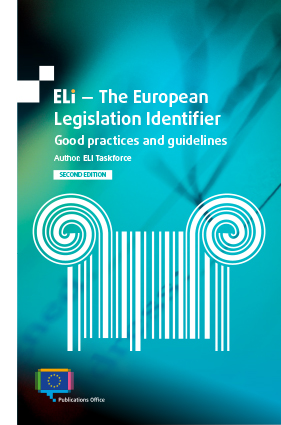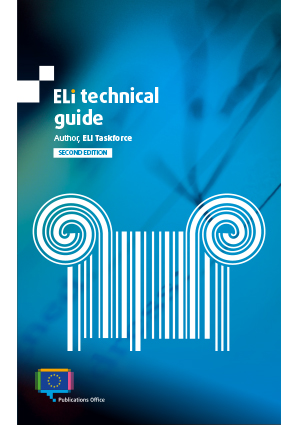

This document is an excerpt from the EUR-Lex website
Resources for implementing ELI
ELI annotation tool
The ELI annotation tool is a tool to enable legislation publishers to annotate and publish legal texts with metadata compliant to the ELI standard.
The ELI annotation tool is used for building notices describing several legal entities (legal resources, legal expressions and formats) using standard properties. The values of these properties are constrained using controlled vocabularies described with the SKOS standard .
The result of the work is a small file to insert into the HTML of the page published on the Official Journal website.
Notices can be created for the following different types of resources:
- acts,
- official journals, and
- consolidation.
The ELI annotation tool also allows vocabularies to be created and published easily in SKOS format.
The tool is an open source solution which is free, simple to install on a server, simple to use and easy to customise for your needs. It does not need any other software to work.
It is available for download on the Commission’s JoinUp sharing platform: https://joinup.ec.europa.eu/solution/eli-annotation-tool .
ELI validator
The ELI validator is an online service that checks published ELI metadata against rules derived from the ELI ontology and produces a validation report. It helps ELI partners to assess the conformance of their data.
ELI/XML
ELI/XML is an encoding of ELI metadata in an XML scheme (XSD). It can be used standalone or imported into other XML documents, typically in a metadata header. The ELI/XML scheme is provided with a set of XML transformations to generate ELI in RDF/XML, RDFa header or HTML+RDFa. It is meant to facilitate the integration of ELI in XML-based document workflows.
Study on how users of legislation access transposition information
In European Union law, transposition is the process by which the EU Member States give force to a EU directive by adopting national implementation measures. The ELI Taskforce conducted a study in order to gain deeper insight into how users of legislation access and work with transposition information. The goal of this study was to determine what website enhancements would best meet usability interests and share these results with national legislation publishers. The study was subdivided into three different parts which are explained in the presentation accessible on the following link: Study on how users of legislation access transposition information.
ELI Best practices report
The ELI Best practices report will identify the best ways to implement ELI.
Technical ELI implementation guide
The Technical ELI implementation guide will answer any technical questions you have about implementing ELI.
ELI ‘Pillar IV’ specification
Protocol to synchronise ELI metadata
ELI ‘Pillar IV’ helper documentation
European legislation identifier (ELI) ‘Pillar IV’ helper is a tool that helps ELI publishers who are implementing the ‘Pillar IV’ specification.
Glossary of technical terms
For more information, discover our glossary.
ELI success stories
Last update: 05/07/2023

